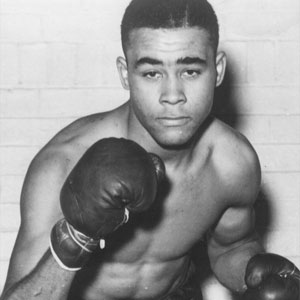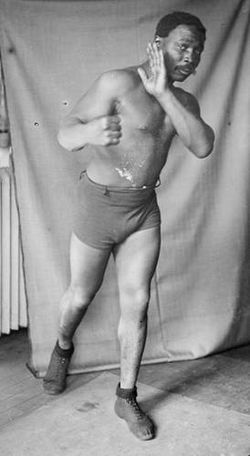Related Research Articles

Edward Patrick "Mickey" Walker was an American professional boxer who held both the world welterweight and world middleweight championships at different points in his career. Born in Elizabeth, New Jersey, he was also an avid golfer and would later be recognized as a renowned artist. Walker is widely considered one of the greatest fighters ever, with ESPN ranking him 17th on their list of the 50 Greatest Boxers of All-Time and boxing historian Bert Sugar placing him 11th in his Top 100 Fighters catalogue. Statistical website BoxRec rates Walker as the 6th best boxer to have ended his career at middleweight, while The Ring Magazine founder Nat Fleischer placed him at No. 4 among greatest middleweights of all time. The International Boxing Research Organization ranked Walker as the No. 4 middleweight and the No. 16 pound-for-pound fighter of all-time. Walker was inducted into the Ring magazine Hall of Fame in 1957 and the International Boxing Hall of Fame as a first-class member in 1990.
During the 1960s, boxing, like mostly everything else around the world, went through changing times. Notable was the emergence of a young boxer named Cassius Clay, who would, in his own words shock the world, declare himself against war, and change his name to Muhammad Ali.

The sport of boxing in the 1930s was affected by one of the biggest economic struggles in the history of the United States: the depression era. Because of the suffering American economy, many boxers were offered lower amounts of money causing them to only box for passion. When the decade began, the world Heavyweight title belonged to no one. The sport of boxing suffered because of the lack of money to pay the boxers.
Boxing in the 1920s was an exceptionally popular international sport. Many fights during this era, some 20 years away or so from the television era, were social events with many thousands in attendance, both men and women.

Samuel Edgar Langford was a Canadian boxing standout of the early part of the 20th century. Called the "Greatest Fighter Nobody Knows", by ESPN, Langford is considered by many boxing historians to be one of the greatest fighters of all time. Originally from Weymouth Falls, a small community in Nova Scotia, he was known as "the Boston Bonecrusher", "the Boston Terror", and his most famous nickname, "the Boston Tar Baby". Langford stood 5 ft 6+1⁄2 in (1.69 m) and weighed 185 lb (84 kg) in his prime. He fought from lightweight to heavyweight and defeated many world champions and legends of the time in each weight class. Considered a devastating puncher even at heavyweight, Langford was rated No. 2 by The Ring on their list of "100 greatest punchers of all time". One boxing historian described Langford as "experienced as a heavyweight James Toney with the punching power of Mike Tyson".

Charley Burley was an American boxer who fought as a welterweight and middleweight from 1936 to 1950. Archie Moore, the light-heavyweight champion who was defeated by Burley in a 1944 middleweight bout, was one of several fighters who called Burley the greatest fighter ever. Burley was the penultimate holder of both the World Colored Welterweight Championship and the World Colored Middleweight Championship.

Isadoro Anthony "Izzy" Jannazzo was an American professional boxer who challenged Barney Ross for the NYSAC, NBA, and The Ring magazine world welterweight championship in November 1936, and took the Maryland version of the World Welterweight Championship in October 1940. In 1937, he fought national welterweight champions before large crowds in Australia and Germany. In 1940, he was listed as the world's top welterweight contender by some sources. His managers were Guy Anselmi and Chris Dundee.

Georgie Abrams was an American boxer who came very close to winning the World Middleweight Championship in November 1941 against Tony Zale and was a top contender for the title in the early 1940s. In his unique boxing career, he fought eight former or future world champions. He was managed by Bo Bregman, and Chris Dundee. Abrams was inducted into the World Boxing Hall of Fame in 2005.

Holman Williams was a world welterweight and middleweight boxing contender. Williams is a member of the infamous Murderers' Row, a group of black fighters who were never able to get a world title shot.

Kid Norfolk was an American professional boxer who fought as a Light Heavyweight and Heavyweight from 1910 through 1926, holding wins over many notable boxers of his day including Joe Jeanette, Billy Miske, Jack Blackburn, Harry Greb, Tiger Flowers, Battling Siki, and Gunboat Smith. Norfolk was inducted into the International Boxing Hall of Fame in 2007.
Murderers' Row refers to a group of middleweight boxing contenders in the United States competing in the 1940s, primarily of a Black American background. Renowned for their toughness and great boxing ability, they were feared throughout the boxing world and never received a shot at the world title. According to boxing pundit Jim Murray, they were “the most exclusive men’s club the ring has ever known. They were so good and so feared that they had to have their own tournament”.

Bob Armstrong, was a heavyweight boxer known as the "King of the Battle Royal". He was born in Rogersville, Tennessee, but he moved with his family to Washington, Ohio when he was three years old.
Herbert Lewis Hardwick Arroyo, also known as "Cocoa Kid", was a Puerto Rican boxer of African descent who fought primarily as a welterweight but also in the middleweight division. Hardwick won the World Colored Championships in both divisions. He was a member of boxing's "Black Murderers' Row" and fought the best boxers of his time. He was inducted into the International Boxing Hall of Fame in 2012.

Frank Childs, "The Crafty Texan", was an African American boxer who fought professionally out of Chicago from 1892 to 1911 and twice held the World Colored Heavyweight Championship. Fighting at a weight of between 160 and 185 lbs., the short, stocky Childs fought middleweights, light-heavyweights and heavyweights. He had a powerful punch.
George Byers was a Canadian boxer who won the World Colored Middleweight Championship in 1897 and held the World Colored Heavyweight Championship from September 14, 1898, to March 16, 1901, a reign of 913 days. The 5′ 8½″ fought out of Boston from 1895 to 1904 at a weight of between 120 and 165 lbs., in many weight classes and frequently against men that were much larger than himself. On 9 December 1897 in Waterbury, Connecticut, he faced Harry Peppers in a title match for the World Colored Middleweight Championship. Byers knocked out the undefeated Peppers, the Pacific Coast Middleweight Champion of the Pacific Coast in the 19th round of a 20-round contest. He took up US citizenship in 1917
The World Colored Middleweight Championship was a title awarded to black boxers in the late nineteenth and early twentieth centuries. This was the only recognized middleweight championship available to blacks prior to Tiger Flowers winning the world middleweight boxing championship by defeating Harry Greb on 26 November 1926.

Young Peter Jackson was an African American boxer active from 1929 to 1939. Born Peter Martin in Los Angeles, California, he renamed himself in honor of the great colored heavyweight champ Peter Jackson and the welterweight contender Peter Jackson. The 5'7" Jackson fought as a lightweight, making his professional debut on August 14, 1929 at the Wilmington Bowl in Wilmington, California, when he knocked out Herb Yales via a knock out in the first round of a scheduled four-round bout.
The World Colored Light Heavyweight Championship was a title created in 1921, when African American boxers were prevented from contending for the world light heavyweight title by the color bar.
Eddie Palmer was an African American boxer who held the World Colored Welterweight and World Colored Middleweight titles. Born in New Orleans, Louisiana in 1892, the 5'9" Palmer fought at a weight of between 142 and 156 lbs. out of Philadelphia and New Orleans between 1910 and 1925. He moved to Philadelphia in August 1911 and fought out of the City of Brotherly Love for two years.
The Black Heavyweight Championship was a title in pretense claimed by the African American boxer Klondike, who was born John Haines or John W. Haynes and by two-time colored heavyweight champ Frank Childs.
References
- ↑ "Cocoa Kid: Record". BoxRec. Retrieved 25 May 2012.
- ↑ Otty, Harry. "Who is the Cocoa Kid?". CharleyBurley.com.
- ↑ "Black Dynamite: Charles Duane Burley". Cyber Boxing Zone. Retrieved 25 May 2012.